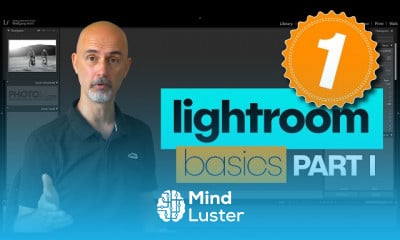EASY Step by Step Photography Tutorial for at home How to photograph an Apple on White Background
Share your inquiries now with community members
Click Here
Sign up Now
Lessons List | 4
Lesson
Comments
Related Courses in Photography
Course Description
In very basic terms, ISO is simply a camera setting that will brighten or darken a photo. As you increase your ISO number, your photos will grow progressively brighter. For that reason, ISO can help you capture images in darker environments, or be more flexible about your aperture and shutter speed settings.What does ISO mean in photography?
to the sensitivity—the signal gain
For digital photography, ISO refers to the sensitivity—the signal gain—of the camera's sensor. The ISO setting is one of three elements used to control exposure; the other two are f/stop and shutter speed.What is a good ISO for camera?
The "normal" range of camera ISO is about 200 to 1600. With today's digital cameras you can sometimes go as low as 50 or as high as over three million, depending upon the camera model. The number chosen has two important qualities associated with it. First, it sets the amount of light needed for a good exposure.Does ISO affect image quality?
Be aware that higher ISO values affect image quality. Shooting at high ISO values can cause your photos to appear grainy. In digital photography, we refer to this grain as “noise.”Is ISO Shutter Speed?
The ISO speed determines how sensitive the camera is to incoming light. Similar to shutter speed, it also correlates 1:1 with how much the exposure increases or decreases. However, unlike aperture and shutter speed, a lower ISO speed is almost always desirable, since higher ISO speeds dramatically increase image noise.
Trends
Electrical engineering for engineer
Artificial intelligence essentials
Graphic design tools for beginners
Microsoft Excel
Human Resources Management
Cyber Security for Beginners | Edureka
Build a profitable trading
Making money with apps
Microsoft Word
Computer science careers
Bioinformatics basics
Python for beginners
AUTOMATA THEORY
Build a tic tac Toe app in Xcode
American english speaking practice
Essential english phrasal verbs
Excel skills for math and science
Marketing basics for beginners
English vocabulary verbs
Chemistry
Recent
Bioinformatics basics
Bioinformatics databases
Vitamin A to Z tablets
Best zoology books
Best cream for piles pain
Laser surgery for piles
Best cream for piles
Anal fissure treatment
Best antibiotics for diseases
Antibodies structure
Macrophage structure
Drosophila genetics
Diagnostic tests
Bioinformatics
Genetics
Gene therapy
Kidney structure
DNA replication and types
Bacterial cell structure
Parasite structure


















